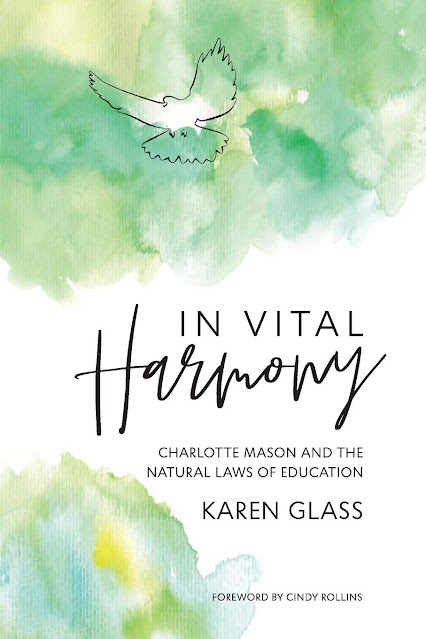
I hope you enjoy this post in a series on homeschool methods. Each post is written by bilingual and/or Latina moms who have chosen a particular style in which to homeschool their children. If you are new to homeschooling and are looking to find the right teaching/learning path for your family, perhaps this post on homeschooling the Charlotte Mason way will appeal to you. For a look at other teaching styles, take a look a my Brief Description of Homeschooling Methods, or scroll down to the bottom of this post for links to the other posts in this series.
The following is a guest post by Lauren Stengele, a bilingual homeschooling mom. She shares her journey on BilingualTogether.com. This post contains affiliate links.
The Charlotte Mason Method
Although I have been homeschooling for seven years now, I have come slowly into the Charlotte Mason philosophy of education. I was introduced to her sometime in our second year of homeschool, and dismissed her whole philosophy as “just reading books and looking at nature.”
However, the following year, I picked up Karen Glass’ book, In Vital Harmony, and was blown away with the pursuit of beauty and integration of all learning that characterizes the Charlotte Mason philosophy. If you are looking into Charlotte Mason, I highly recommend starting with this book.
Who was Charlotte Mason?
Charlotte Mason was an educator in England during the late 1800s and early 1900s. She held to radical notions (for the time) that children are persons, and not just empty sponges to be filled with information. She believed that all children can learn, that all children want to learn, and an educator’s job is to spread a feast of ideas for their students.
This feast includes a deep and meaningful study of nature, starting with your local fauna and flora. The feast includes reading good books by great thinkers, “living books” as they are called in Charlotte Mason circles. She believed that “education is the science of relations,” which means that if a child is brought to this feast of education, the child cannot help but draw connections for themselves. They discover how history and math connect in Galileo. Or how geography impacts mythology, when they recognize similar threads throughout the stories of the Americas, but very different threads throughout the stories of Europe.
Other cornerstones of a Charlotte Mason education are narration, habit formation, practical life skills, and handicrafts. And yes, math and grammar are included, too. For time's sake, I won’t get into all of this here. If you are still curious, do pick up In Vital Harmony for an easy but thorough introduction into Mason’s philosophy.
Charlotte Mason Methodology
This sounds great, but what does this look like day-to-day?
As I came to realize the richness and depth of the Charlotte Mason philosophy, I began implementing it more and more in our homeschool. We have always had a literature-based homeschool, but Mason’s philosophy has freed me up more and more to focus on the quality of what we read, rather than the quantity.
In our homeschool, we spend a lot of time reading together, re-telling the stories we have heard, and discussing them. (My children are 10, 8, and 6, for reference). We start with Morning Time, during which time we sing, read poetry, and study composers.
We move on to our read-alouds which cover history, literature, and science. For example, this year we are studying Medieval History. Since we began school this year, we have read Beowulf, and are currently reading The Twelfth Night by Shakespeare (both a picture book retelling, and the original). In Spanish, we are reading El Cid by Rosa Navarro Duran. We are also reading about birds and bats.
After read-alouds, we move into math and language studies which are one-on-one with each child. When I am working with one child, the other children have independent work. We usually finish our academic work around lunch time.
This leaves lots of time each day for free play and pursuit of their interests. However, it also leaves time for them to join me in the regular running of a household: dishes, laundry, cleaning, and cooking dinner. These life skills are just as essential in the whole education of a child as the academic work is.
Charlotte Mason in a Bilingual Homeschool
One unexpected blessing of following this philosophy has been the freedom to stop searching for the perfect Spanish curriculum for our homeschool, and simply focus on finding beautiful books in Spanish to read with my children.
Yes, I still love to look at bilingual units and Spanish language resources, but I no longer feel the burden to find (or make) the perfect Spanish-language unit for my child’s interests, or our current history track. Instead, I now search for living books in Spanish on the subject. And we read…
This simple change has made homeschooling in two languages easier and more delightful than I thought possible!
Want to learn more?
Charlotte Mason herself wrote six large books on her educational philosophy. They are slow reading, but well worth it. If you want to start with one, I suggest Home Education. However, I will say again, the best introduction to Charlotte Mason is In Vital Harmony by Karen Glass. Also of note, there is a vibrant Mason community in the Spanish-speaking world, and a great place to start is A Living Education En Español website.
Other Posts You may Enjoy
- Homeschooling the Montessori Way
- What is Unschooling? How to Get Started
- A Brief Description of Homeschooling Methods
- Homeschool Montessori Preschool Program
Written by:
Lauren Stengele is a non-native Spanish speaker, language teacher, and bilingual homeschooling mom. Her blog, BilingualTogether.com, shares homeschooling resources for bilingual families, including free Morning Time plans.



